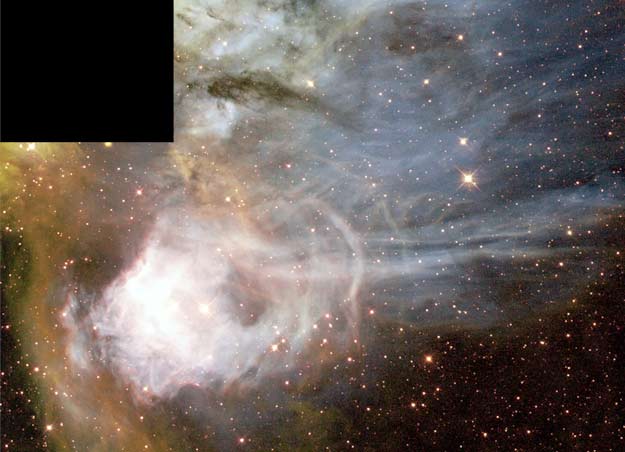Explanation: Why is N44C glowing so strangely? The star that appears to powers the nebula, although young and bright, does not seem hot enough to create some of the colors observed. A search for a hidden hotter star in X-rays has come up empty. One hypothesis is that the known central star has a neutron star companion in a very wide orbit. Hot X-rays might only then be emitted during brief periods when the neutron star nears the known star and crashes through a disk of surrounding gas. Future observations might tell. N44C, pictured in the above Hubble Space Telescope image, is an emission nebula in the Large Magellanic Cloud, a neighboring galaxy to our Milky Way Galaxy. Flowing filaments of colorful gas and dark dust far from the brightest region are likely part of the greater N44 complex. It would take light about 125 years to cross N44C.
1999 2000 2001 2002 2003 2004 2005 2006 2007 2008 2009 2010 2011 2012 2013 2014 2015 2016 2017 2018 2019 2020 2021 2022 2023 2024 2025 |
Yanvar' Fevral' Mart Aprel' Mai Iyun' Iyul' Avgust Sentyabr' Oktyabr' Noyabr' Dekabr' |
NASA Web Site Statements, Warnings, and Disclaimers
NASA Official: Jay Norris. Specific rights apply.
A service of: LHEA at NASA / GSFC
& Michigan Tech. U.
|
Publikacii s klyuchevymi slovami:
emission nebula - x-ray binary - emissionnaya tumannost' - rentgenovskie dvoinye
Publikacii so slovami: emission nebula - x-ray binary - emissionnaya tumannost' - rentgenovskie dvoinye | |
Sm. takzhe:
Vse publikacii na tu zhe temu >> | |
